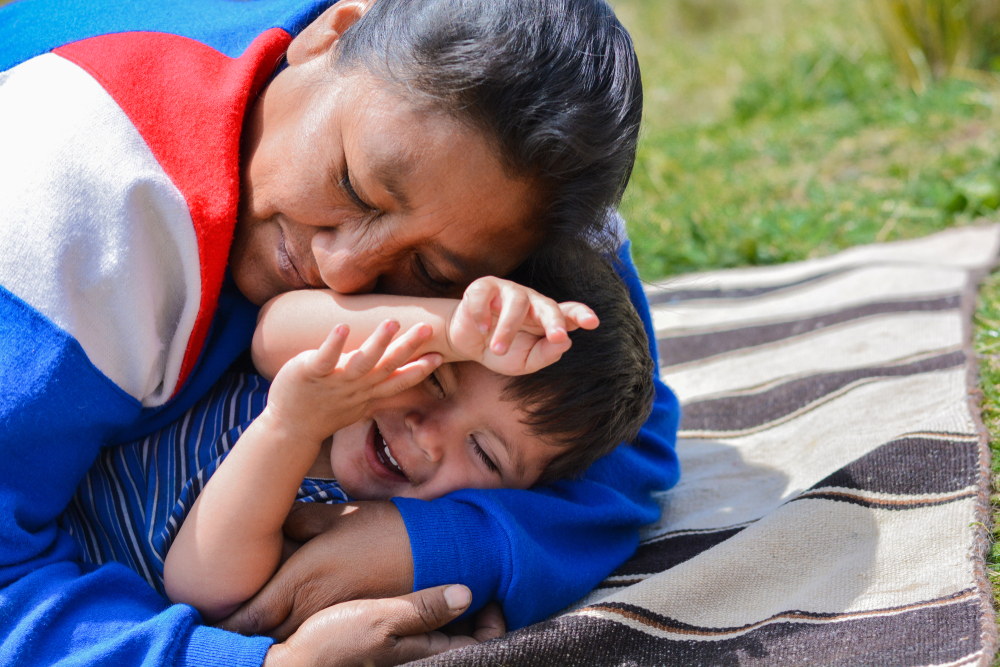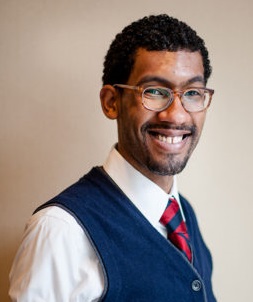
Ruslana Lurchenko/Shutterstock
.
The 5th Circuit Court of Appeals put on hold on Dec. 5 a ruling that would declare the Indian Child Welfare Act unconstitutional. This controversial decision would have effectively overturned a law that has existed for 40-plus years to protect the rights of Native American tribes and the cultural needs of Native children in foster care.
As a child welfare social worker, advocate for racial and social justice, and non-Native foster parent of a child with Native American heritage, I’m grateful the court granted the stay, which will effectively keep the protections of ICWA in place awaiting appeal. The federation of Native American tribes that requested the action say the Act “protects children from potential abuse and forced separation from their families.”
ICWA means keeping Native kids in Native families

Trey Rabun
The ongoing need for ICWA’s protections is clear: In Washington state, Native American children are 2.9 times more likely to enter the foster care system than their white counterparts. However, in 2016 there were less than 100 Native foster homes in Washington, meaning most Native foster children are placed in non-Native foster homes.
Neither my husband nor I have Native heritage, but the child we foster is an enrolled member of a Southwest tribe. We’re honored to have our little guy Michael (name changed for confidentiality reasons) in our home. We are also keenly aware that children do best when they grow up in a home that reflects their cultural and racial identity and has the tools to help them navigate the world as a child of color. So we were not surprised or concerned to learn that, in accordance with ICWA, the state and Michael’s tribe tried to find a relative or Native home when he first entered foster care and continued to do so after he moved in with us.
We knew this meant Michael would leave our home if a Native foster family was found for him. This was scary and sad for us — but we also knew it was in Michael’s long-term best interest.
My husband’s and my motivation to become foster parents is rooted in our desire to help the most vulnerable children and to expand our family through adoption. We know, however, that the primary goal of foster care is reunification — meaning a child returns to their biological family, if it is safe to do so. And while we were hopeful about adopting a child who was not able to return home, we were also prepared to be a temporary home. This is what foster care is about: stepping in when a child needs you most and then stepping aside when it’s time to do so.
Staying connected with culture
Our duty as foster parents is to keep the children in our care safe and to ensure all their needs are met, which includes supporting their cultural identity. As a multiracial couple, we gravitated toward the idea of foster parenting youth of color because we personally understood the importance of cultural identity. We soon became aware, though, that we needed to enhance our knowledge of Native American culture for Michael; specifically, about the tribe in which he is enrolled.
We connected with a home visiting program that uses an indigenous lens to teach about child development. We met one of Michael’s relatives who was in town and continue to try to form relationships with his first family. We’ve also intentionally connected with Michael’s tribal social worker to form a relationship with her. They provide culturally appropriate education materials, help us learn more about the tribe’s history and facilitate relationships with Michael’s extended first family.
Still, we often wonder if we are doing enough and acknowledge his age is a struggle (Attending a support group from 6-8 p.m. on a weekday can be hard to do with a toddler!). We hope that as Michael gets older we will be able to engage more with local Native resources and plan to make trips to meet tribal and family members out of state. I also hope we get to the point where he feels comfortable navigating Native-only spaces and relationships without us in an authentic way.
A Bit of History
Let’s be clear: As in our case, ICWA does not prevent non-Native foster families from taking in Native kids in foster care. Instead, this law aims to keep children connected to their communities and culture if they cannot safely live at home with their parents. It gives placement preference to an immediate family member, followed by a member of the same tribe and, finally, any Native home regardless of tribal membership. For any child placed in foster care or adopted, the courts as well as tribal and government child welfare agencies must show diligent efforts in placing a child according to the law. If a Native home can’t be found, the law allows for the child be placed into a non-Native home.
A quick history lesson: America is built on land that doesn’t belong to anyone who is not an indigenous inhabitant. Native Americans were labeled “savages” by European settlers, displaced from their land and forced to live on reservations. Our government created boarding schools and sent troves of Native children to these schools to teach them how to be “American.” These children lost their language, culture and identity.
In 1970, in an attempt to right these wrongs of actively trying to dismantle the Native family, Congress passed ICWA. It stood as the law of the land for 40-plus years against many legal challenges.
ICWA needs to be bolstered, not eliminated
I know critics argue that ICWA doesn’t account for the attachment and bond a foster child creates with their non-Native foster parents over the months and years they are placed in their home. I completely understand this argument. Why aren’t children placed into Native homes quicker if that’s the law? Why does it sometimes occur several years after placement once the child is legally free for adoption and they already have a secure and solid attachment with their current non-Native foster parent?
Keep in mind that ICWA’s implementation depends on tribes, social workers, court workers and judges, who — in our woefully underfunded system — are often struggling with huge caseloads and understaffing. This overburdened, under-resourced child welfare system sadly often leads to ICWA being applied incorrectly or with delay.
The answer isn’t to get rid of the law, but to help ensure the system is able to apply ICWA in a consistent and timely manner. This includes giving the resources needed to ensure tribes have the staff and infrastructure to follow up and track cases of their children in the foster care system. We also need to do a better job educating court systems about ICWA so they can implement it effectively and help keep other parties accountable in finding ICWA-appropriate placements in a timely manner.
Michael recently became legally free for adoption. We are delighted and will work hard to ensure that Michael is as connected to his heritage as possible. His tribe was fully involved during the decision to allow us to be an adoptive home as we had to get approval from the council of elders since we are a non-Native home. I hope through our words and actions they know we will do our best to keep Michael culturally connected to his roots.
Still, it might not have gone this way. If a Native foster family had been found, we knew the child we loved would have left our home, and there were a few times when this felt likely. Yes, our hearts would’ve broken but that’s part of the fostering journey.
ICWA is a good law, enacted to right a terrible historical wrong. It needs to be bolstered and better funded, not eliminated. If our concern is minimizing trauma and maintaining attachments with caregivers for kids in foster care, we must focus our efforts and resources to build up Native communities so that children’s family have what they need to parent their children successfully.
We also need to put a higher priority on initial searches for extended family and other suitable caregivers for Native children who have to be removed from their homes. Native children in foster care need us to work harder to maintain connections to their communities, their tribes and their culture — not make it easier to take all that away from them.
Trey Rabun is a family outreach specialist for Amara and created its specialized recruitment effort to increase the number of African American foster families. Personally, he and his husband have been fostering for almost three years and currently have a 3-year-old child in their care.





























